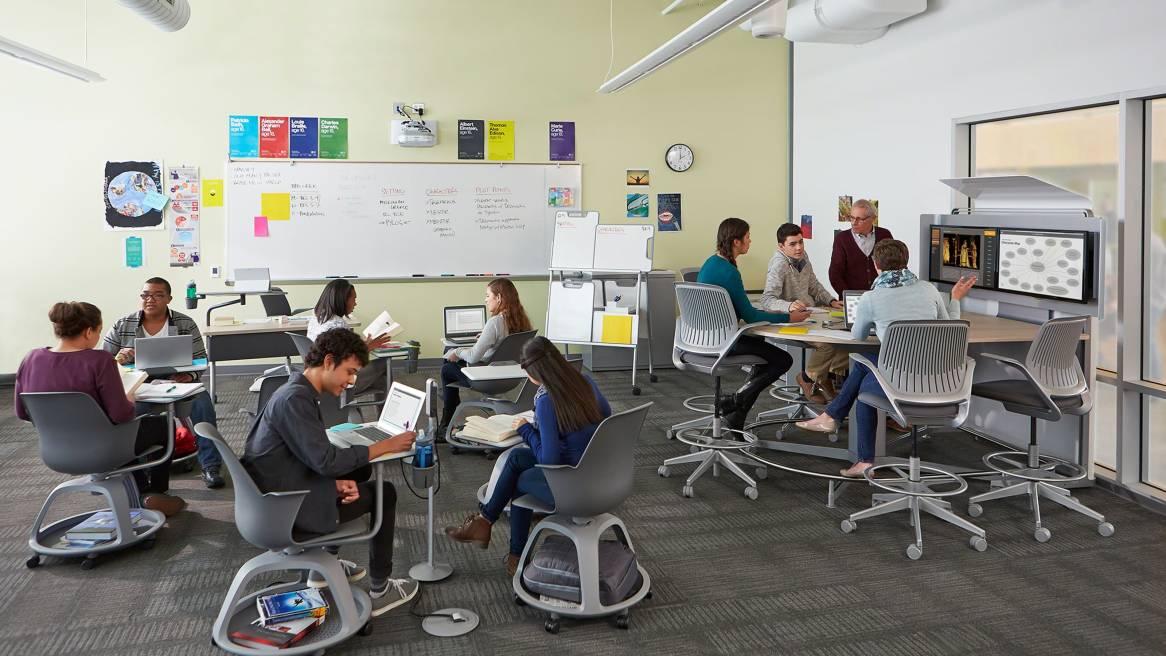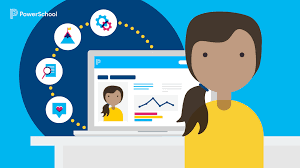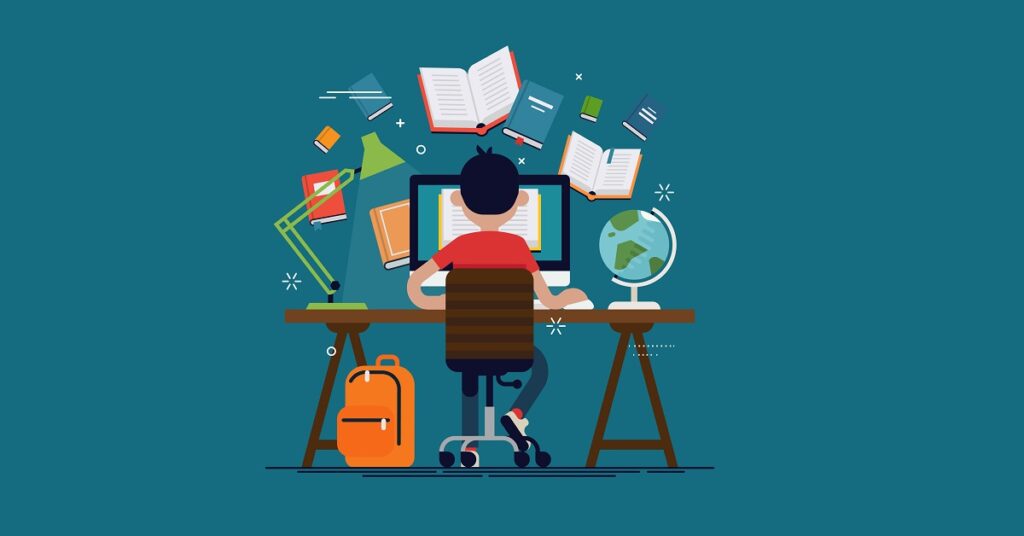
We offer a comprehensive curriculum developed by an international team, experienced teachers, and a focus on individualized and project-based learning.

We offer a comprehensive curriculum developed by an international team, experienced teachers, and a focus on individualized and project-based learning.

Imagine a classroom where every student feels seen, heard, and understood. This is the power of a personalized learning material, and it’s transforming education as we know it. In the traditional one-size-fits-all model, students often struggle to keep up or feel bored and disengaged.
Personalized learning flips the script, empowering students to take ownership of their education journey. But how can educators in the Philippines create these individualized learning experiences?
This blog post dives deep into the world of personalized learning, offering practical advice and actionable steps for creating a dynamic and engaging learning environment for every student. Ready to unlock their full potential?
Personalized learning is more than just a buzzword; it’s a philosophy that puts the individual student at the center of the learning process. It recognizes that each student learns differently, has unique strengths and weaknesses, and possesses varying interests and aspirations.
At its core, personalized learning is about tailoring the educational experience to meet these individual needs. This involves providing students with customized learning paths, flexible pacing, and choices in how they learn and demonstrate their understanding.
Think of it as creating a bespoke suit for each student’s mind, ensuring a perfect fit for optimal growth and development. This approach fosters a sense of ownership and responsibility, empowering students to become active participants in their education.

Several key principles guide the implementation of personalized learning. These principles provide a framework for creating a learning environment that caters to individual needs and promotes student success.
The focus shifts from a teacher-centric approach to one where students are actively involved in shaping their learning journey. Their interests, strengths, and needs drive the educational experience.
Personalized learning embraces a variety of learning resources and modalities. This includes digital content, interactive simulations, hands-on activities, and collaborative projects, catering to different learning styles and preferences.
Recognizing that students learn at different paces and have unique starting points, personalized learning provides individualized pathways. This allows students to progress at their own speed and delve deeper into areas of interest.
Assessment data plays a crucial role in personalized learning. It provides insights into student progress, identifies areas for improvement, and informs instructional adjustments.
Regular feedback and opportunities for reflection are essential components of personalized learning. This helps students understand their strengths, identify areas for growth, and develop self-regulation skills.
A personalized learning material offers a wealth of benefits for both students and educators. By tailoring the learning experience, we can create a more engaging, effective, and equitable educational environment.
For students, personalized learning can lead to increased motivation, improved academic performance, and a greater sense of ownership over their learning. When students feel seen and understood, they are more likely to actively participate and strive for success.
Educators also benefit from personalized learning. It allows them to better understand their students’ needs, differentiate instruction more effectively, and create a more dynamic and responsive classroom environment.
One of the most significant benefits of personalized learning is its ability to boost student engagement and motivation. When students have a say in what they learn and how they learn it, they are more likely to be invested in their education.
Imagine a student passionate about marine biology. In a traditional classroom, they might have to wait for a specific unit to explore this interest. But with personalized learning, they can delve into oceanography, study marine ecosystems, and even connect with marine biologists through online resources.
This level of choice and autonomy can ignite a spark in students, making learning more relevant and meaningful. When students feel their interests are valued, they are more likely to actively participate and take ownership of their learning.

Implementing personalized learning in the classroom requires a shift in mindset and a willingness to embrace new approaches to teaching and learning. It’s about moving away from a one-size-fits-all model and creating a learning environment that caters to individual needs.
Several strategies can help educators personalize the learning experience for their students. These strategies involve using formative assessment data, creating flexible grouping structures, and providing students with choices in their learning.
By incorporating these strategies, educators can create a more dynamic and responsive classroom where each student feels supported and challenged.
Formative assessment is a crucial tool in personalized learning. It provides ongoing feedback on student learning, allowing educators to identify areas of strength and areas where students may need additional support.
They can take various forms, such as quizzes, exit tickets, observations, and student self-reflections.
The data gathered from formative assessments can inform instructional decisions, allowing educators to adjust their teaching to meet the specific needs of their students. This might involve providing differentiated instruction, offering individualized support, or adjusting the pace of learning.
Technology provides access to a wealth of resources, enables flexible learning modalities, and allows for data-driven decision-making.
A wide range of educational technologies can support personalized learning, from learning management systems and adaptive learning platforms to interactive simulations and virtual reality experiences.
These tools can help educators create personalized learning paths, provide differentiated instruction, and track student progress.
Learning management systems (LMS) are essential tools for managing and delivering personalized learning experiences. They provide a centralized platform for organizing learning materials, tracking student progress, and facilitating communication.
Popular LMS platforms like Moodle, Canvas, and Google Classroom offer a range of features that support personalized learning, such as:

While personalized learning offers tremendous potential, implementing it effectively can be challenging. Educators may face obstacles such as limited resources, inadequate teacher training, and resistance to change.
Addressing these challenges requires careful planning, ongoing support, and a commitment to continuous improvement.
One of the most significant challenges in implementing personalized learning is the availability of resources. Schools may lack the funding to invest in necessary technologies, learning materials, and professional development.
Teacher training is another critical factor. Educators need adequate training and support to effectively implement personalized learning strategies and utilize educational technologies.
Overcoming these challenges requires creative solutions and a collaborative approach. Schools can explore partnerships with organizations, seek grant funding, and leverage open educational resources to supplement existing resources.
Implementing personalized learning often requires a shift in mindset and practices, which can encounter resistance from some educators and stakeholders.
Some teachers may feel uncomfortable relinquishing control over the learning process or worry about managing a classroom with diverse learning paths. Others may be hesitant to adopt new technologies or change their teaching methods.
Addressing this resistance requires open communication, collaboration, and a supportive environment. Schools can create a culture of innovation by:

Are you ready to start your journey on personalized learning? Here’s a roadmap to guide your first steps:
Don’t feel overwhelmed by the need to overhaul your entire teaching approach overnight. Begin by incorporating small elements of personalized learning into your existing practices.
For instance, you could:
Provide options for students to show their understanding
Allow them to choose between writing an essay, creating a presentation, or building a model to showcase their understanding.
Use formative assessments to gather data on student learning
Implement quick quizzes, exit tickets, or student self-reflections to gauge understanding and adjust your instruction accordingly.
Provide differentiated instruction to meet diverse learning needs
Offer different levels of support, learning materials, or activities based on student readiness and learning styles.
Technology can be a powerful ally in personalizing learning experiences. You can search for different tools and platforms, specifically, to support your personalized learning.
Create and deliver personalized learning materials
Utilize learning management systems, digital content platforms, and interactive simulations to provide customized learning experiences.
Track student progress and provide feedback
Use assessment tools and data analytics to monitor student learning and offer targeted support.
Facilitate communication and collaboration
Leverage online platforms for discussions, feedback, and peer learning.
Cultivate a growth mindset in your students by emphasizing the importance of effort, perseverance, and learning from mistakes. Encourage them to embrace challenges, seek feedback, and view setbacks as opportunities for growth.
Create a classroom culture where students feel safe to take risks, ask questions, and learn from each other. Celebrate their progress and effort, fostering a sense of accomplishment and motivation.
Connect with other educators who are implementing personalized learning. Share your experiences, challenges, and successes. Learn from each other and build a supportive community of practice.
Participate in professional development opportunities, attend conferences, and join online forums to stay abreast of the latest research and best practices in personalized learning.
Personalized learning is an ongoing journey, not a destination. Continuously reflect on your practices, gather feedback from your students, and make adjustments as needed.
Be open to trying new approaches, experimenting with different technologies, and refining your strategies to create the most effective learning experiences for your students.

The Philippines is ripe for a personalized learning revolution. With its diverse student population and a growing focus on 21st-century skills, the country can greatly benefit from embracing this innovative approach.
Imagine classrooms across the archipelago where students are empowered to take ownership of their learning, explore their passions, and develop the skills they need to thrive in the modern world.
This vision can become a reality through concerted efforts and collaboration among educators, policymakers, and technology providers.
The Department of Education’s commitment to modernizing the education system and integrating technology into classrooms lays the groundwork for personalized learning to flourish.
Personalized learning aligns perfectly with the country’s goal of producing globally competitive graduates. By fostering critical thinking, creativity, collaboration, and communication skills, personalized learning equips students with the tools they need to succeed in a rapidly evolving world.
Furthermore, personalized learning can address the unique challenges faced by the Philippine education system, such as disparities in access to quality education and the need to cater to diverse learning styles.
As we reach the end of this exploration into the power of a personalized learning material, it’s time to reflect on the key takeaways and consider how you can apply these insights to create a more engaging and effective learning environment.
This blog post has delved into the core principles of personalized learning, explored its benefits for both students and educators, and provided practical strategies for implementation.
By embracing the principles of personalized learning and taking actionable steps towards implementation, you can empower your students to become active learners, critical thinkers, and lifelong learners who are well-equipped to thrive in the 21st century.

FutureClassroom is Southeast Asia's largest coding platform for K-12, empowering students with essential skills in Web Development, Game Development, Python, and AI. Aligned with Cambridge and Pearson standards, our platform combines interactive learning and real-world projects to prepare young learners for a future driven by technology.
View all posts
FutureClassroom is Southeast Asia's largest coding platform for K-12, empowering students with essential skills in Web Development, Game Development, Python, and AI. Aligned with Cambridge and Pearson standards, our platform combines interactive learning and real-world projects to prepare young learners for a future driven by technology.
Get all the latest information, support and guidance about the cost of living with kindergarten.
Start Registration